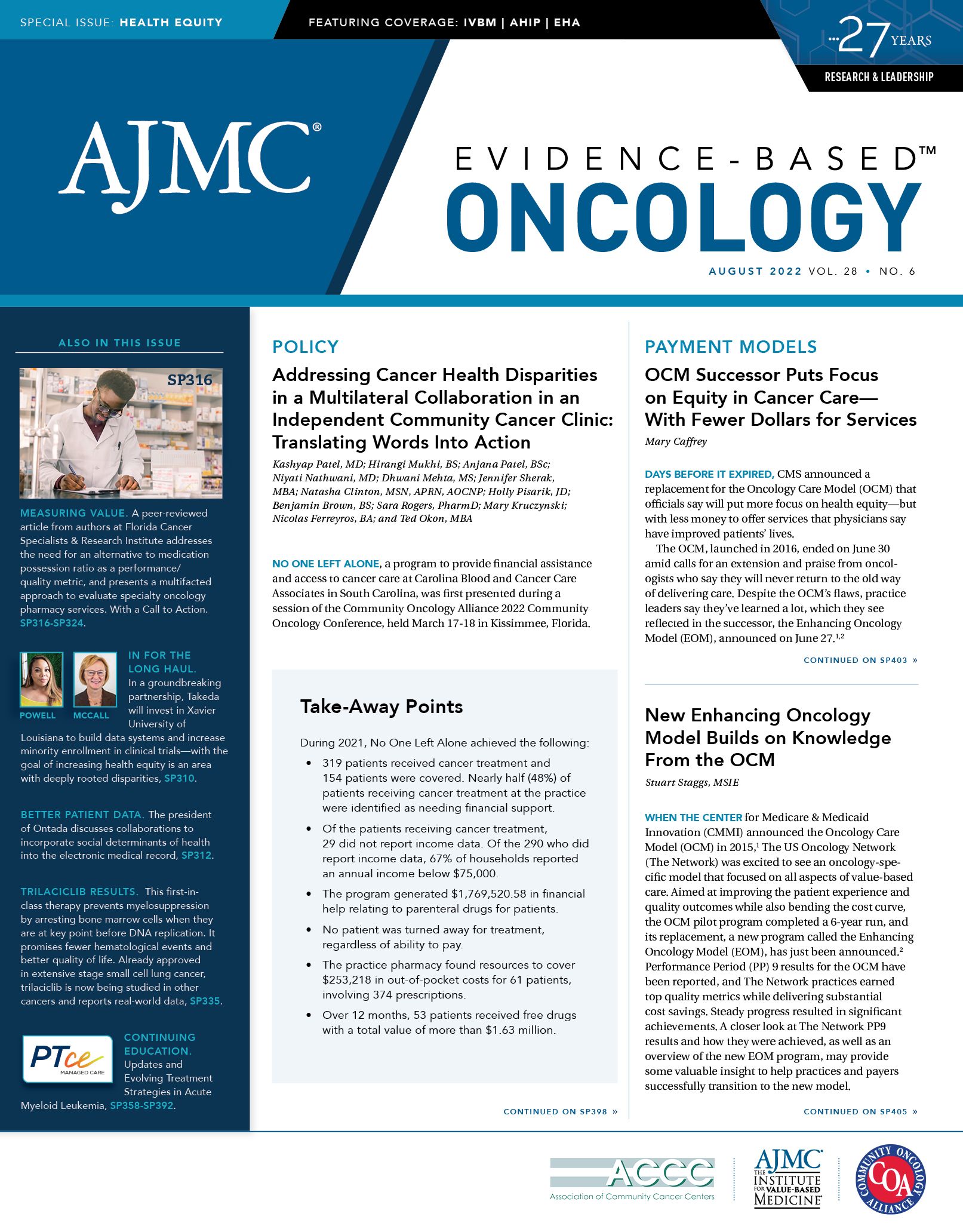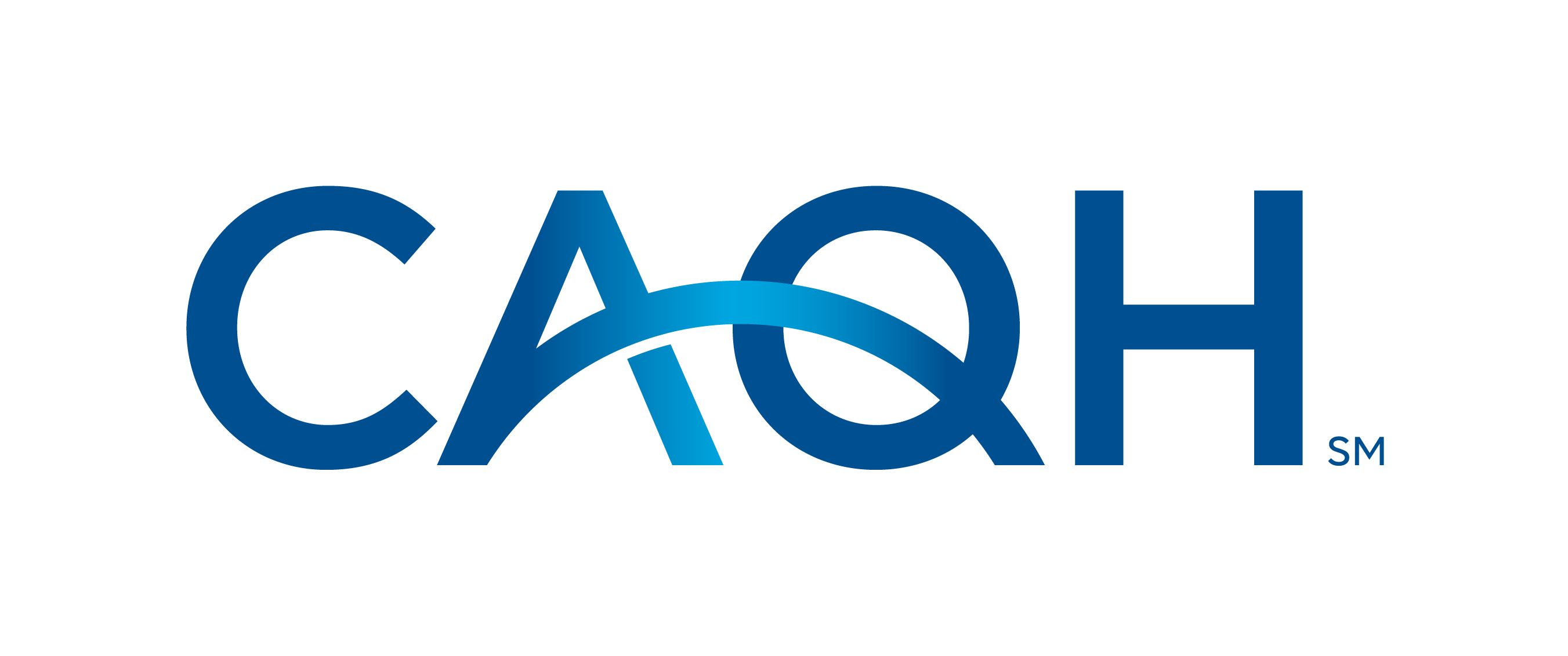Publication
Article
Evidence-Based Oncology
Advancing Cancer Care Equity: Yes, and…
Author(s):
We are in the midst of an extraordinary period of advances in cancer care and therapeutic innovations. In 2022, the American Cancer Society (ACS) noted that, “the cancer death rate for men and women combined fell 32% from its peak in 1991 to 2019.”1 The 2 most recent ACS updates saw cancer mortality rates fall by the largest percentages ever reported. These profound improvements in cancer survival rates are a cause for great celebration and are illustrative of the best that our cancer care delivery can achieve. Yet, celebration of this achievement must be tempered by the fact that many patients never see the full benefit of these advances in cancer care outcomes. The 2022 American Association for Cancer Research (AACR) Cancer Disparities Report documents the stunning degree to which our cancer research and care delivery systems fail many patients and families. The report finds, “Medically underserved populations have more adverse effects, poorer quality of life, and higher financial toxicity after a cancer diagnosis.”2 Additional findings include persisting gaps in the recruitment of underserved populations onto therapeutic interventional clinical trials, worse cancer survival outcomes for patients from ethnic minority groups and for those living in rural areas, and a greater likelihood to be diagnosed at a more advanced cancer stage.
Life-compromising disparities persist, and this should humble us as a stark reminder that the latest gadget is no guarantee of a more just and effective model of cancer care delivery. Nor will therapeutics alone address the pernicious and persistent impact of care disparities. We need to think differently about how to move forward. Toward that end, the renewed focus of CMS upon reducing care disparities is both timely and deeply needed. As the agency which is responsible for care payment for more than 144 million beneficiaries (81.2 million Medicaid and CHIP, 63.8 million Medicare), there is an enormous potential for these initiatives to impact patient cancer care access and care experience throughout the United States. CMS’ focus on better data capture, evolving reimbursement models, and incentives for more equitable care are, however, just the beginning. Achieving true care equity requires a multitude of cancer care stakeholders to make a profound and systemic quantum leap from the point of care mindset toward engaging patients and families with a more community-centric mindset. Effective cancer care begins with community engagement, promotion of greater health literacy, and increased use of culturally competent patient education. Research centers must go beyond their bricks and mortar settings and invest in outreach and accrual efforts. Systems that are intentionally designed to be deeply embedded in the community—and fully patient centered in implementation—will be deliver a more sustainable system of equitable care.
In this edition of Evidence-Based Oncology™, we bring you a suite of perspectives on care equity, the potential impact of new payment models in oncology, and the gaps that must be traversed to succeed.
The way forward is one in which both cancer care innovation and the progressive humanization of the care experience are jointly connected in engaging patients closer to home. This is not something that any one center, or CMS, or pharma can do on their one. As cancer care stakeholders align around a higher vision of what it will take to ensure that the most vulnerable members benefit from the full breadth of life-saving care options, then we will have a moment upon which we can deliver true cancer care equity.
References
1. Risk of dying from cancer continues to drop at an accelerated pace. News release. American Cancer Society. January 12, 2022. Accessed August 4, 2022. https://www.cancer.org/latest-news/facts-and-figures-2022.html
2. Cancer Disparities Progress Report. Philadelphia: American Association for Cancer Research. 2022. Accessed August 4, 2022. Available from http://www.CancerDisparitiesProgressReport.org/






